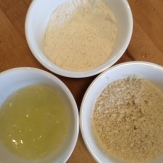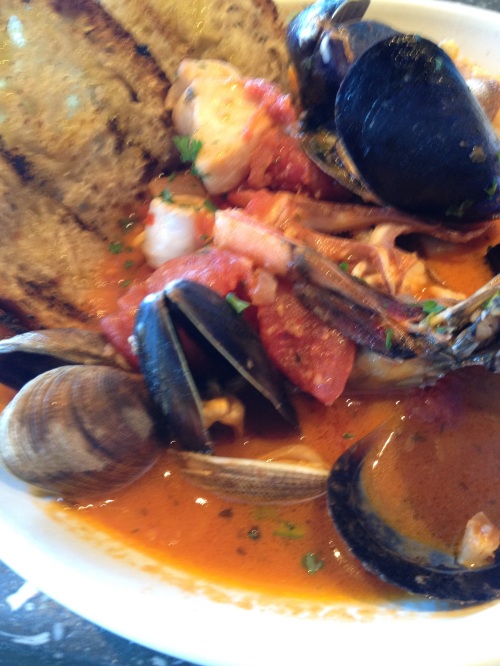We’ve been traveling west again. This time we will be itinerant baby sitters as we visit San Francisco so that Sarah and Evan can cook at an event in Maui, then on to Los Angeles so that Carol can attend a meeting in Washington, D.C., then back to Silicon Valley so that René can give a talk in the Czech Republic, and finally back to San Francisco while Sarah and Evan go to Shreveport.
We’ll be gone for a month, so we have taken the opportunity to drive with a car loaded with stuff we are giving to our family as we try to downsize. That travel also suggested that we could take some of the back roads we have been wanting to visit for many years.
First stop was Sky City. This is the ancient part of Acoma Pueblo. Even though there are now only a few permanent residents, the community is made up of two- and three-story houses made of stone and adobe. The town and its residents have been photographed by many famous and not-so-famous photographers including Edward Curtis and Ansel Adams. The church is particularly photogenic.
The most direct way to get there is to get off I-40 at Exit 108 – which isn’t marked (Probably because it is the exit for the Laguna Pueblo Casino). The exit at the Acoma Casino is marked, but the roundabout is confusingly labeled, and it is easy to miss the turn and wander around on back roads.
These days you go to the visitors center to board a bus for a trip to the top of the mesa. The tour starts every hour on the half hour – though sometimes not. For a fee, you can take a camera. The day we were there a sign at the front of the center read, “No cameras today.” Once inside, my wife was told that the sign was for yesterday but that she could not take her binoculars, which were strictly forbidden. We had missed the tour, but we were told that we could take in the museum – except that the museum was closed. We decided not to wait. Perhaps our timing will be better on our return trip.

View of Sky City
Acoma is most noted for its pottery. Here are some examples from our collection.

Acoma pot

Antique Acoma pot

Acoma seed jar
Inscription Rock (El Morro National Monument) should not be missed if you are on the back roads. The scenery is beautiful, including the edge of the Malpais National Monument with its miles of interesting lava formations, mesas, and pine forests. The route is now isolated, but for centuries it was the main trail between Acoma and Zuni Pueblos. After the Spanish arrival, it became a path to the South Sea. California immigrants passed here during the westward expansion, US soldiers and even Union Pacific agents exploring a railroad route stopped at the prominent bluff. They paused at the pool of water at the base of the cliffs and carved their names in the rock. Messages include those of Oñate, the conqueror of New Mexico who cut off the feet of men of Acoma who revolted, along with de Vargas who reconquered New Mexico after the Pueblo Revolt of 1680. This historic and magical place would have been destroyed if the AT&SF railroad hadn’t beaten UP to the punch in building a railroad further to the north where the busy interstate is now located.

Inscription Rock

Cat tails and pool at the base of Inscription Rock

Petroglyphs by Native Americans (?date)

Inscription by Onate in 1609

Inscription Rock from the trail
We went through Seligman, Arizona, on the historic Route 66, for ice cream. The town was filled with European tourists anxious to get a glimpse of the “Mother Road” and also some refreshments. Seligman is also the inspiration for the town where Lightning McQueen met his sidekick, Mater, in the classic cartoon movie, “Cars”.

Downtown Seligman on Route 66. Where’s Lightning McQueen?
Our final stop for the day was the historic La Posada in Winslow, Arizona. The hotel was designed in 1929 by Mary Colter, the famous woman architect who also designed several other grand hotels for the Santa Fe railroad and Fred Harvey hotels. Some still stand, including the famous hotel on the South Rim of the Grand Canyon. Unfortunately, La Posada had been long ignored and was about to be demolished. It was rescued by the present owner and lovingly restored. As well, it has been decorated with paintings by the owner’s wife and sculpture by their business partner.

Entrance to La Posada

Art works in the lobby of La Posada

Stained glass mural in tne Turquoise Room
The restaurant, the Turquoise Room, is the biggest surprise. It is undoubtedly the only high-end restaurant on I-40 between Albuquerque and Los Angeles. We always stop and enjoy the food. This time was no different.
The comfortable bar is decorated in the style of a 1930s railroad club car. The dining room is done in the same era, but the food is very modern. For dinner we had cream-cheese-stuffed squash blossoms. I had their “Signature Soup” topped with the initials of the restaurant in chile cream. Then I had shrimp with spinach pappardelle, and we enjoyed a Grand Marnier chocolate soufflé for dinner. For breakfast, Susan had Harvey Girls style orange pancakes with almonds, and I had Arizona green chile eggs, a riff on huevos rancheros which substituted polenta for tortillas.

Turquoise Room Signature Soup (corn chowder, black bean soup and chile cream)

The bar at the Turquoise Room

Grand Marnier chocolate souffle

Harvey Girls orange pancakes with almonds

Arizona green chile eggs with black beans and corn tortillas
Probably the last good food we would enjoy until we got to San Francisco.





























































